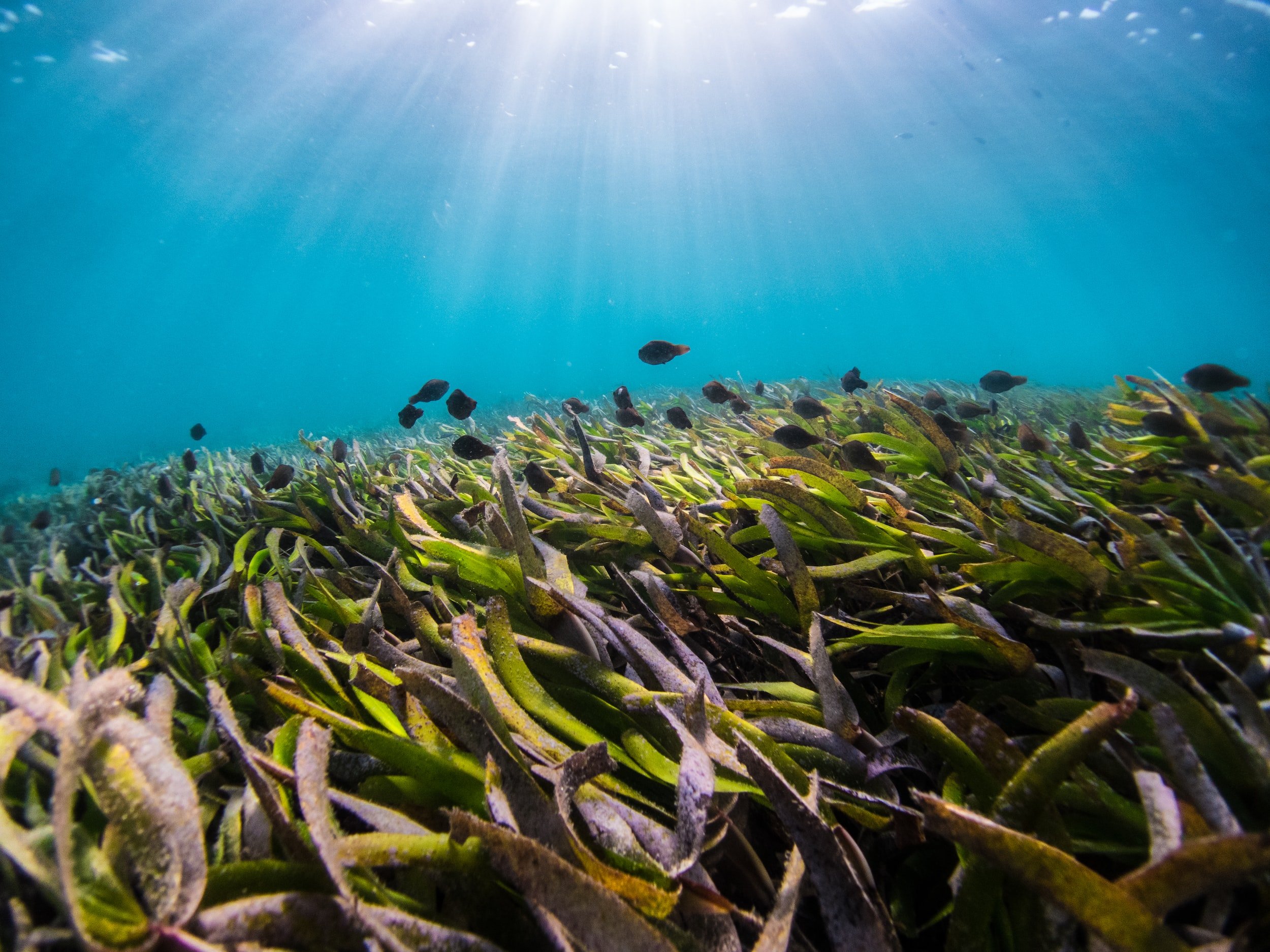
Seagrasses
Florida's seagrass habitat is a critical and diverse marine ecosystem found along the state's extensive coastline, particularly in the shallow waters of its bays, estuaries, lagoons, and coastal areas. Seagrasses are marine plants that have adapted to live submerged in saltwater and play a crucial role in supporting the health of coastal ecosystems. Florida's seagrass habitats are among the most extensive and important in the United States.
Seagrass beds support a high level of biodiversity, serving as habitats for various species of fish, invertebrates, and marine organisms. Many commercially and recreationally important species depend on seagrass meadows for shelter, breeding, and feeding.
They help stabilize the sediment on the seabed with their root systems, reducing coastal erosion and maintaining the integrity of shorelines. This erosion control is particularly crucial during storms and high-wave events.
Seagrass meadows contribute to improved water quality by trapping sediments and filtering nutrients from the water column. Their presence can help mitigate the negative impacts of excess nutrients and sediment runoff from land-based sources, contributing to clearer waters.
Seagrasses are highly efficient at capturing and storing carbon dioxide (CO2) from the atmosphere. This carbon sequestration contributes to mitigating the effects of climate change by reducing greenhouse gas concentrations.
Florida's seagrass habitats are popular destinations for recreational activities such as boating, fishing, snorkeling, and diving. These activities support local economies through tourism.
Efforts to conserve Florida's seagrass habitat include regulating coastal development to minimize habitat destruction, addressing pollution sources that affect water quality, promoting responsible boating and fishing practices, and conducting research to better understand and protect these valuable ecosystems.
Types of Seagrass
Turtlegrass (Thalassia testudinum): This species is one of the most widespread and dominant seagrasses in Florida. It has long, ribbon-like leaves and forms dense meadows.
Manatee Grass (Syringodium filiforme): Manatee grass has thin, thread-like leaves and is an important food source for herbivores like manatees and green sea turtles.
Shoal Grass (Halodule wrightii): Shoal grass is often found in shallower waters and has shorter leaves compared to other seagrass species.
Johnson's Seagrass (Halophila johnsonii): This seagrass species is relatively rare and is listed as threatened under the Endangered Species Act due to its limited distribution and vulnerability to various threats. It has small leaves and delicate features.
Paddlegrass (Halophila decipiens): Paddlegrass is another species of seagrass found in Florida's coastal waters. It is considered an important species for the ecosystem and is closely monitored due to potential habitat loss and other environmental stressors.
Star Grass (Halophila engelmannii): Star grass is a seagrass species with distinct star-shaped clusters of leaves. It plays a role in maintaining healthy coastal ecosystems.
Mangrove Grass (Halodule beaudettei): This seagrass species is found in brackish and saltwater habitats, often in areas where mangroves are present. While not as well-known as other seagrass species, it contributes to the overall biodiversity and functioning of the coastal ecosystem.
Endangered Species Living in Seagrasses
West Indian Manatee
Shortnose Sturgeon
Green Sea Turtle
Loggerhead Sea Turtle
Smalltooth Sawfish








